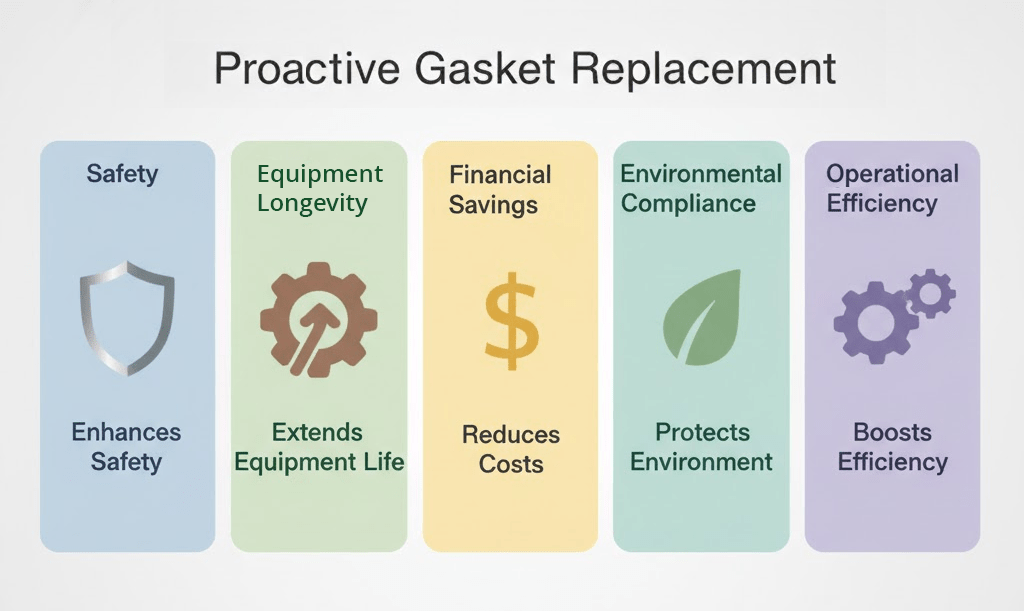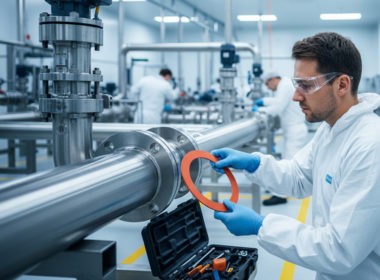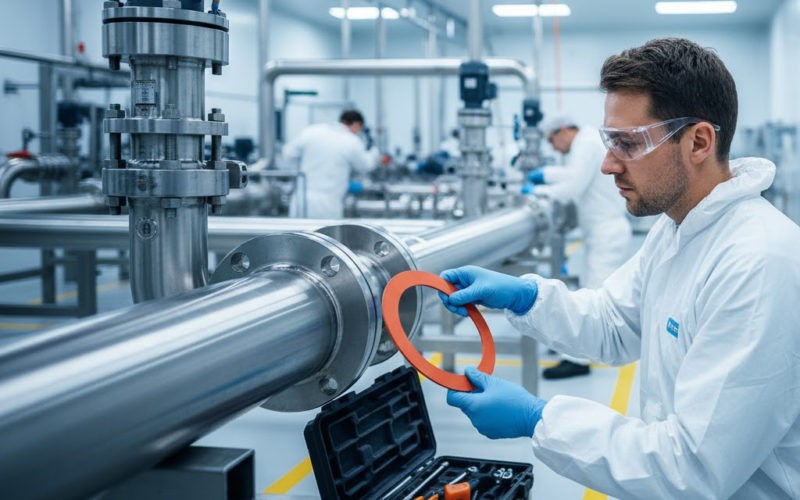Gaskets are instrumental in maintaining the integrity of industrial equipment and pipes. They secure seals between parts, prevent leaks, maintain pressure, and ensure efficient functioning. Despite their critical role, many operations only replace gaskets after failure. This reactive strategy can lead to unexpected downtime, safety hazards, and high maintenance costs. Proactive, scheduled gasket replacement prevents small issues from escalating, ensuring system reliability.
Scheduled maintenance allows teams to manage resources and inventory efficiently. Predicting when gaskets need replacement helps ensure the right materials, such as fiberglass gaskets or durable composites, are available. Proactive scheduling reduces emergency repairs, minimizes operational disruptions, and enhances overall maintenance strategies.

Importance of Preventing Unexpected Failures
Unexpected gasket failures can have widespread implications. Leaks of fluids, gases, or pressurized air through a failed gasket can impair system performance. In critical systems, even a small leak can cause equipment malfunctions or unsafe conditions. Such failures often result in costly downtime and urgent repairs, which proactive planning can prevent.
Regular gasket replacement maintains system integrity and reduces the risk of leaks or ruptures. This approach also allows inspection of related components during maintenance, addressing minor wear or corrosion before it becomes a significant issue.
Impact on Equipment Longevity
Frequent gasket changes help increase equipment longevity. Gaskets degrade over time due to heat, pressure, chemicals, and mechanical stress. Failed gaskets can damage other components, escalating repair costs. Routine replacement protects valves, flanges, and other parts from excessive wear.
Proactive maintenance enables engineers to select materials suited to environmental conditions, such as temperature fluctuations or chemical exposure. For example, fiberglass gaskets can be used in high-temperature areas for effective sealing. These choices extend the life of both gaskets and the equipment they protect, supporting sustainable, cost-effective maintenance.
Safety Considerations in Gasket Maintenance
Gasket performance directly affects the safety of personnel and operations. Malfunctioning gaskets in high-pressure steam or chemical-handling systems can pose serious risks, including fires, chemical exposure, or explosions, endangering workers and equipment.
Scheduled maintenance allows staff to address potential risks proactively. Regular gasket replacement ensures seals remain intact, reducing the likelihood of hazardous leaks. Routine inspections also identify wear, corrosion, or imbalances in surrounding components, enhancing overall operational safety. Using materials like fiberglass insulation in critical systems can further minimize heat-related gasket damage, improving their durability.
Financial Benefits of Proactive Replacement
Allowing gasket failures to escalate into emergencies is often more costly than routine maintenance. Unplanned downtime can halt production, delay deliveries, and increase labor costs. In contrast, scheduled gasket replacement allows organizations to plan maintenance and procure materials in advance, reducing financial burdens.
Routine replacement also prevents secondary damage to equipment, which can be expensive to repair or replace. An undetected small gasket leak over weeks can damage valves, pumps, or piping systems, inflating costs. Scheduled maintenance protects equipment and provides predictable budgeting for long-term cost management.
Environmental and Compliance Advantages
Gasket failures can have environmental impacts, particularly from leaks of chemicals, oils, or hazardous materials. Such spills can pollute soil, water, or air, leading to regulatory violations and cleanup costs. Regular gasket replacement prevents leaks, ensuring compliance with environmental regulations and minimizing fines or reputational damage.
Proactive maintenance aligns with sustainability goals by reducing material waste. Preventing catastrophic failures eliminates the need for emergency replacements, conserving resources. Durable materials like fabric fiberglass provide long-lasting sealing solutions, supporting environmentally responsible maintenance.
Operational Efficiency Through Routine Maintenance
Operational performance improves with scheduled gasket replacement. Systems with reliable seals run smoothly, minimizing production interruptions. Maintenance schedules enable better workforce management, allowing technicians to plan tasks rather than react to unexpected breakdowns.
Proactively replaced gaskets ensure optimal pressure and fluid flow, enhancing performance and reducing energy consumption. Incorporating gasket replacement into broader maintenance plans maximizes workflow efficiency, reducing disruptive, reactive repairs.
Conclusion
Replacing gaskets on a planned basis rather than upon failure is a strategy that enhances safety, equipment longevity, and operational efficiency while supporting financial planning. Proactive replacement lowers unplanned downtime, prevents damage, and ensures system integrity. The reliability of materials like fiberglass gaskets extends their lifespan and performance. This approach shifts maintenance from reactive to proactive, ensuring reliable operations, safer workplaces, and efficient resource use.











